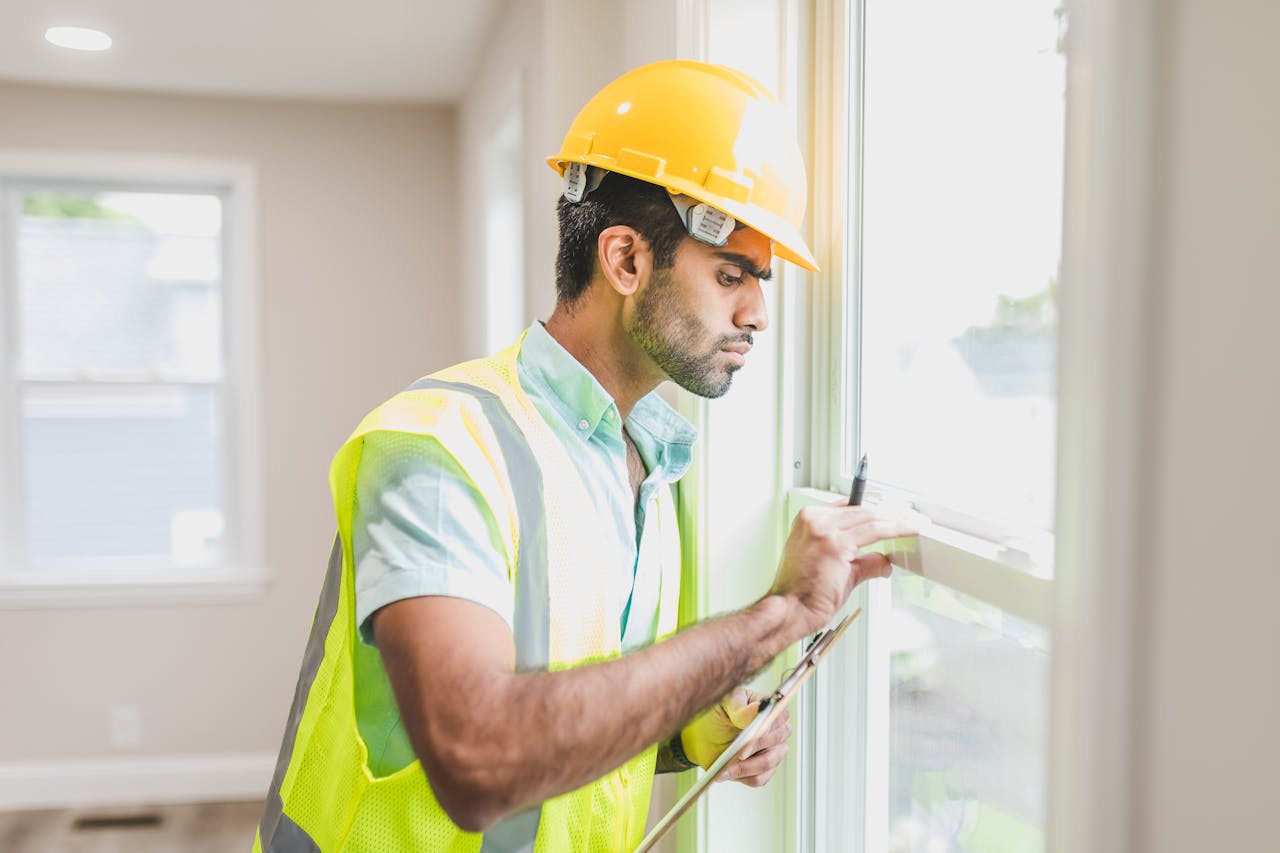
Organising building work and renovating a home is one of the most exciting times of homeowner’s lives, without a doubt. The potential, the added value to quality of life, the financial benefit, it’s exciting, to put it simply. To make sure it is all done correctly and able to live up to all of this potential, however, there are a few critical steps to consider along the way. Most recently, this comes from the updated Building Safety Act 2022.
In a nutshell, there are two roles to be filled in a building project to get Building Control approval. They are; the Principal Designer, and the Principal Contractor. That is as well as the client, who is now legally responsible for appointing capable people.
Essentially, the Principal Designer is in charge of making sure that designs are done correctly and are buildable, with approval likely and reasonable. The Principal Contractor is then the person building the project, overseeing work, and ultimately responsible for getting approval.
What is more interesting still with the new revelations of the Building Safety Act, however, is that a builder can now be both Principal Contractor and Principal Designer, should they change anything from the original designs and plans once the build has commenced.
The reason that is so important is that both roles must do their part in full in order to gain approvals. Both of these roles have certain obligations and you cannot gain sign-off at the end of the project if the builder isn’t clued up on what they must do and must record, as they need an evidence file.
The Role of Principal Designer
- Oversee the design phase of the project to ensure compliance with Building Regulations.
- Coordinate with all involved parties, manage and monitor design work and ensure that designs meet regulatory standards.
- Act as a liaison between the client, designers, and contractors, fostering cooperation and communication throughout the project.
- Possess a comprehensive understanding of Building Regulations and construction processes to effectively carry out duties.
The Principal Designer plays a pivotal role in ensuring the safety and compliance of construction projects under the Building Safety Act. Their primary responsibility is to oversee the design phase of a project and coordinate with all involved parties to ensure that designs meet Building Regulations. This involves meticulous planning, management, and monitoring of design work to guarantee that if construction were to proceed according to the design, it would adhere to all relevant requirements.
Additionally, the Principal Designer acts as a liaison between the client, other designers, and contractors, fostering cooperation and communication throughout the design phase of the project. They assist the client in providing necessary information to designers, review previous design arrangements, and ensure that all designers comply with their duties. Crucially, the Principal Designer must have a comprehensive understanding of Building Regulations and construction processes to effectively carry out their duties.
By assuming oversight of the design phase, the Principal Designer plays a crucial role in ensuring the safety, efficiency, and regulatory compliance of construction projects, thereby contributing to the overall success of the project.
It is vital to note here that the role of the Principal Designer remains even in the building work. If the former Principal Designer is no longer involved in the project post design, the Principal Contractor will also become the Principal Designer, as they assess the site and make changes as required.
The Role of Principal Contractor
- Oversee and manage the construction phase of the project to ensure compliance with Building Regulations.
- Plan, manage, and monitor construction activities, ensuring all work meets regulatory standards.
- Act as the central point of contact for cooperation among duty holders, liaising with the Principal Designer to implement design specifications correctly.
- Possess a thorough understanding of construction processes, safety protocols, and regulatory requirements.
The Principal Contractor plays a vital role in the construction phase of projects governed by the Building Safety Act. Their primary responsibility is to oversee and manage the building work to ensure compliance with Building Regulations. This in itself involves meticulous planning, management, and monitoring of construction activities to guarantee that all work meets regulatory standards. This is absolutely essential for sign off.
Coordination among all parties involved in construction is essential, and the Principal Contractor acts as the central point of contact for ensuring cooperation among duty holders. They liaise with the Principal Designer as needed, unless they take on that role, ensuring that design specifications are implemented correctly during construction.
Additionally, the Principal Contractor assists the client in providing information to contractors, reviews previous arrangements, and notifies Building Control where necessary. They must have a thorough understanding of construction processes, safety protocols, and regulatory requirements to effectively carry out their duties.
Overseeing the construction phase, the Principal Contractor ensures that projects are completed safely, efficiently, and in compliance with Building Regulations.
The Role of the Client
- Ensure suitable arrangements are in place to plan, manage, and monitor the building work to comply with Building Regulations.
- Appoint the Principal Designer and Principal Contractor in writing, ensure appointed designers and contractors are competent, and provide necessary support and information to duty holders.
- Maintain overall responsibility for project management and compliance, actively engaging with duty holders and addressing concerns promptly.
Finally, the client has a role in the project too. Their primary responsibility is to ensure that suitable arrangements are in place to plan, manage, and monitor the building work to comply with Building Regulations. This includes appointing the Principal Designer and Principal Contractor in writing and making a reasonable effort to ensure these roles are filled with professionals who are competent to do the job.
It has to be stressed, that throughout the project lifecycle, the client must take all reasonable steps to ensure that appointed designers and contractors are competent for their respective roles. They must also maintain these arrangements and provide necessary support and information to duty holders.
While the Principal Designer and Principal Contractor oversee specific phases of the project, the client maintains overall responsibility for making sure these roles are filled competently, or as reasonably so as should be expected. They must actively engage with duty holders, address any concerns promptly, and ensure that the project proceeds smoothly within regulatory frameworks.
By fulfilling their obligations, the client contributes to the successful and safe completion of construction projects, safeguarding the interests of all stakeholders involved. Again, it is vital to note that should any of these roles not be filled at any time, the client will be responsible for these roles.
When Did the New Legislation Take Effect?
The new regulations in the Building Safety Act came into force on the 1st of October 2023, meaning roles were mandatory for any projects from this date. There was some additional information on the legislation which was published in August 2023, but it is the October date that actually brings the legislation into play.
Conclusion
Overall, the Building Safety Act represents an important change to building and project standards that everyone in the industry needs to know about.
Whilst professional designers, architects and builders should all be aware and informed about these changes, the reality is that the client also has a responsibility to be aware of these changes, and it is the client who ultimately is at the greatest risk.
It’s likely to cause a lot of problems with smaller builders and sole traders not being able to fulfil the role properly, and as a result, never getting it signed off for the client, which opens up a lot of issues down the line.




